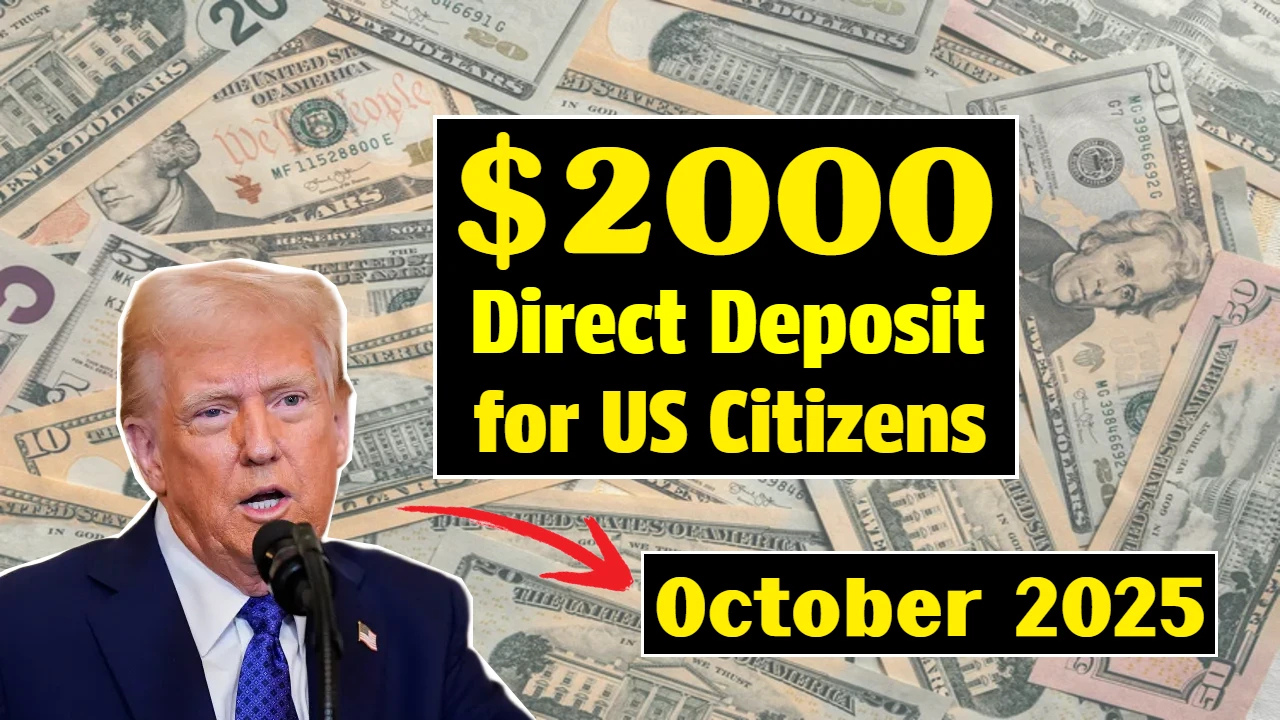There’s finally some good news for millions of Americans struggling with rising inflation. The US government has confirmed that eligible citizens will receive a $2,000 direct deposit in October 2025 under the latest federal financial relief initiative. This payment, supported by the IRS and the Treasury Department, is designed to help low- and middle-income families manage inflation and stabilize their monthly budgets.
The announcement has brought a wave of relief and hope to families across the country who have been waiting for some form of financial assistance. Here’s everything you need to know about the eligibility, payment dates, and details of the $2,000 direct deposit plan.
Why is the $2,000 Direct Deposit Being Issued?
In recent months, prices of essential goods like groceries, fuel, and housing have steadily risen, putting pressure on working families and retirees alike. To ease this financial burden, the government has decided to provide a one-time direct deposit of $2,000 to eligible individuals and families in October 2025.
This payment is part of the federal Economic Relief and Recovery Program, which aims to boost household spending and help Americans maintain their purchasing power during uncertain times. Like previous stimulus programs, this payment will be administered and distributed by the Internal Revenue Service (IRS) through direct deposit or mailed checks.
What are the eligibility criteria?
To be eligible for a $2,000 direct deposit, citizens must meet specific income and residency requirements set by the IRS. The eligibility criteria are as follows:
- Must be a U.S. citizen or lawful permanent resident with a valid Social Security number.
- Single filers must earn $75,000 or less in 2024.
- The head of household must earn $112,500 or less.
- Married couples filing jointly must have a combined income of less than $150,000.
- Senior citizens receiving Social Security (SSI/SSDI) are automatically eligible.
- Veterans and low-income workers enrolled in government benefit programs are also included.
If your income exceeds these limits, the payment amount will gradually decrease and end completely for individuals earning more than $99,000 and couples earning more than $198,000.
Payment Schedule and Method
The IRS has announced that payments will begin in mid-October 2025, and most recipients are expected to receive their funds before the end of the month.
Here are the possible payment timelines
| Payment Method | Estimated Delivery Date |
|---|---|
| Direct Deposit | October 18–25, 2025 |
| Paper Check (via mail) | October 26–November 5, 2025 |
| EIP Prepaid Debit Card | October 28–November 7, 2025 |
If you previously received a stimulus payment or tax refund via direct deposit, the IRS will use the same bank account information for this deposit. Those who have changed or moved bank accounts should update their information immediately through the IRS’s “Get My Payment” portal.
How to check your payment status
Eligible citizens do not need to apply separately for this payment – the IRS will automatically determine your eligibility based on your 2023 or 2024 tax return.
To track your payment:
- Visit the official IRS website at www.irs.gov.
- Click “Get My Payment.”
- Log in with your Social Security number or ITIN.View your payment date, method, and current status.
If your payment is delayed or you don’t receive it by November 2025, you can contact the IRS Helpline or file a “Payment Trace Request” to investigate.
Taxation and Benefits
One of the most common questions among Americans is whether the $2,000 payment is taxable. The answer is no—this payment is not taxable and will not affect your Social Security, Medicare, SSI, or unemployment benefits. It is considered a refundable credit, not income.
However, recipients should keep a record of the payment for their 2025 tax filing, as it may appear as part of the Recovery Rebate Credit section.
Common FAQs
Q1. Do I need to apply to receive the $2,000 payment?
No application is required. The IRS will automatically send payments to eligible individuals based on their most recent tax filings.
Q2. Will seniors and Social Security recipients get it automatically?
Yes. Seniors who receive Social Security, SSI, or SSDI benefits will get the deposit through their registered bank account or Direct Express card.
Q3. What if I didn’t file taxes last year?
Non-filers can use the IRS Non-Filers Tool to register their details and claim their payment.
Q4. Will this affect my benefits or tax refund?
No, it won’t impact any existing government assistance or your 2025 refund.
Q5. Can I get the payment if I live abroad but am a U.S. citizen?
Yes, U.S. citizens residing overseas are eligible as long as they meet the income and filing criteria.
Final Thoughts
A $2,000 direct deposit in October 2025 is a welcome step for Americans still struggling with high prices and slow wage growth. For millions of families, this payment will bring temporary financial relief—whether it’s paying bills, buying groceries, or paying rent.
As always, be sure to verify all information through official IRS channels and avoid scams promising quick help. This initiative demonstrates that even in difficult economic times, help is still on the way for those in need.
Check your IRS account today—your $2,000 payment may have already arrived.

